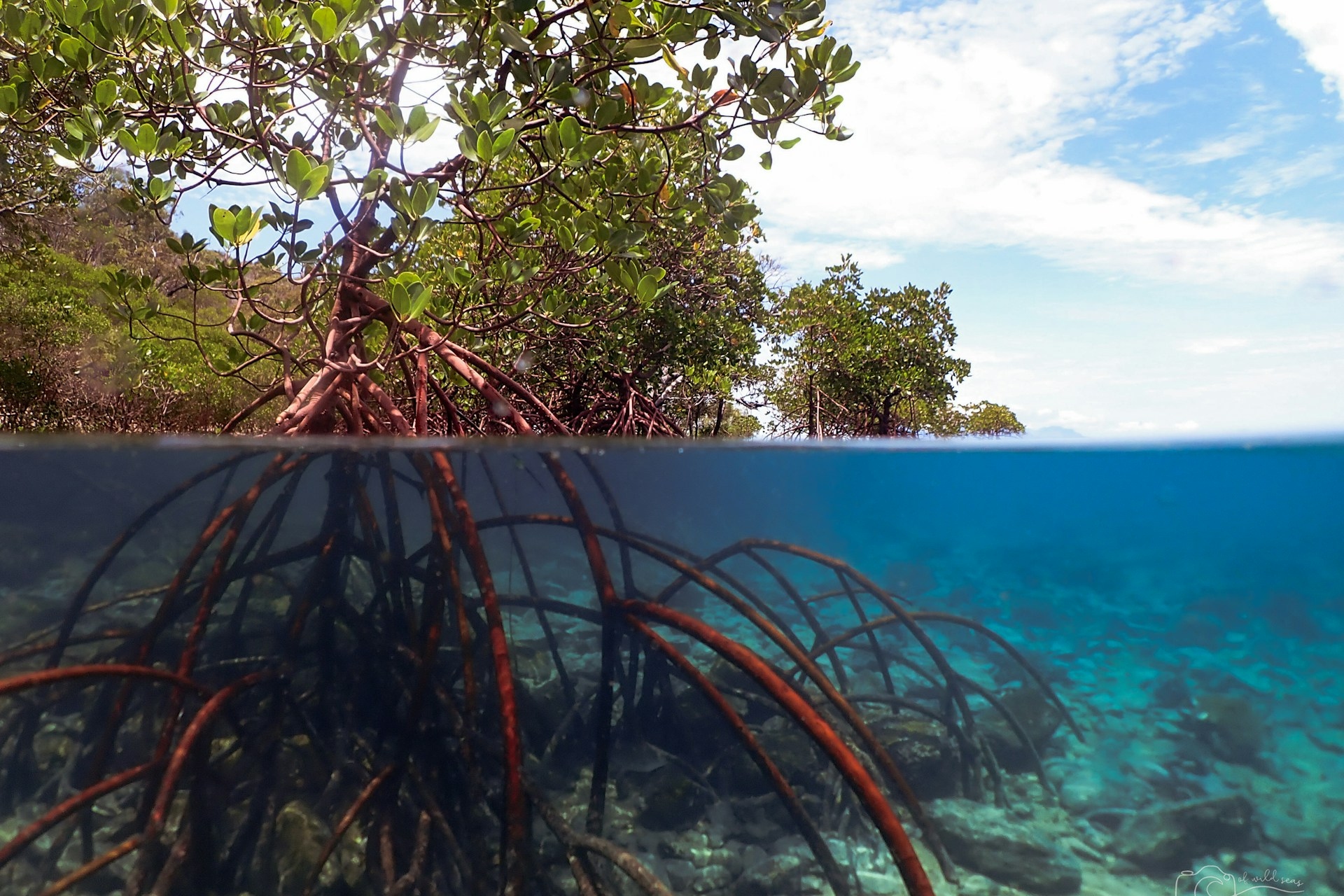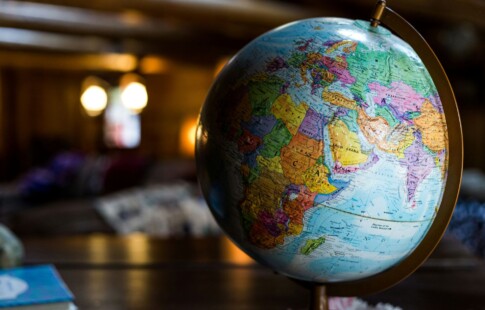
Roots of Resilience: The Unsung Heroes of Mangrove Conservation
We are reader-supported. When you buy through links on our site, we may earn affiliate commission.
Coastal wetlands are having a moment as global initiatives lead mangrove conservation efforts worldwide. From Madagascar to Angola and Suriname, inspiring individuals have come together to restore and protect these fragile ecosystems from collapse.
Why Are Mangroves Disappearing?
Mangroves occur in 105 countries on five continents, protecting coastlines from flood damage worth $65 billion annually, sequestering 8.5 gigatons of carbon dioxide, and sustaining the livelihoods of 4.1 fishermen. Unfortunately, coverage declined by 35% by 1999 and another 2.1% from 2000 to 2016.
The drivers of mangrove deforestation are primarily increasing climate change impacts, rising sea levels, pollution, and land conversion for aquaculture and agriculture. Although mangrove protections have increased by 17% since 2012 — now spanning 42% of coastal wetlands — ongoing efforts are critical. After all, restoring mangrove forests demands a tailored approach to addressing threats imposed on each ecosystem.
The Urgency of Mangrove Conservation
The International Union for Conservation of Nature and Natural Resources (IUCN) says 50% of mangroves are at risk of becoming vulnerable, endangered or critically endangered. The recent IUCN report highlights potential losses of the following by 2050 without climate change mitigations:
- Sequestration of 1.8 billion metric tons of CO2 — mangroves currently reserve 17% of global emissions
- Coastal flood protections for 2.1 million people
- $36 billion in property value damage
- 17% of fisheries, which are significantly supported by mangrove forests
Wetlands serve as a nursery for fish and a breeding ground for 85% of migratory birds in the United States alone. Likewise, these ecosystems maintain abundant plant-based ingredients for vital pharmaceuticals, further protecting future generations from disease.
Green Guardians Spearheading Wetland Protections
Governments, non-profits and concerned citizens worldwide have taken matters into their own hands regarding coastal ecosystems. Globally, groups have risen to tackle mangrove deforestation — and if satellite mapping and monitoring is any indication, their initiative is paying off. Here are five of the unsung heroes at the forefront of mangrove conservation.
1. Otchiva
The Otchiva project aims to restore the Angolan mangrove ecosystem, of which 60% has been lost due to wood harvesting, oil and gas exploration, and other exploitive activities. Of course, rampant urbanization has also negatively impacted biodiversity loss.
Fernanda Samuel is Otchiva’s National Coordinator and Leader of Mangrove Protection and Conservation Actions. Her call to mangrove conservation came when she noticed flamingos being driven out from her town on the southern coast.
Despite political pushback and threats from various industries, Samuel and her friends mobilized community volunteers, developed environmental education programs for local fishermen, and advocated against illegal dumping.
In 2021, Otchiva partnered with Blue Carbon, which focuses on mangrove, sea grass, and salt marsh restoration projects.
2. Mangrove Action Project
Since its launch in 1992, the nonprofit Mangrove Action Project (MAP) has tremendously impacted global mangrove ecosystems. The group empowers local communities, nongovernmental organizations, governments, and organizations to become better stewards of coastal wetlands.
MAP’s education programs, initiatives, expertise, and restoration efforts improve ecosystem management decision-making and critical coastal forest habitat. A major approach to long-term solutions is their community-driven replanting and rehabilitation efforts, which bolsters community resilience and deepens a sense of pride in the natural environment.
In 2023, MAP hosted a workshop in the Bahamas to teach best practices for mangrove restoration. The nonprofit taught 53 people over eight days about wetland ecology and planted 48,000 red mangroves between Grand Bahama and Abaco.
3. Wetlands International
Founded in 1954, Wetlands International is a global nonprofit organization devoted to wetland conservation and management, including mangroves, peatlands, marshes, and lakes. They work alongside numerous entities in research and advocacy, deploying restoration projects to address dire coastal ecosystem threats.
The group helps communities develop wetland management practices and spearhead replanting projects. It also plays a critical role in local, national, and global political decision-making.
Wetlands International oversees 22 projects worldwide, including the Mangrove Capital Africa program. The 10-year program hopes to restore 1 million hectares of African mangroves, benefiting 2 million people across Senegal, Kenya, Mozambique, Sierra Leone, and Guinea-Bissou by 2027.
4. Blue Ventures
Renowned marine conservation group Blue Ventures helps communities manage and protect coastal ecosystems in Madagascar and other African and Asian regions. Their approach includes research, community development, and fisheries management to build resilient mangrove forests.
In Gambia, Blue Ventures has teamed up with Sanyang Youths for Environmental Protection and Development to restore 6 hectares of mangroves — an initiative that is dire for protecting its coastal communities from future climate change impacts.
5. Mangrove Trust
Based in Singapore with international reach, the Global Mangrove Trust is a nonprofit organization that helps fund and support wetland projects and community partnerships to preserve mangrove ecosystems. Its program raises awareness of the ecological benefits of these coastal forests, enables more robust local stewardship, and advocates for legislation to promote sustainable resource use.
The Global Mangrove Trust has successfully protected 2,305.6 hectares of mangroves in North Sumatra, delivering a 121,000 expected annual quantum of avoided emissions and new CO2 sequestration.
Their efforts have also benefited the community by enhancing their long-term economic growth and supporting women’s livelihoods — about 70% of wages are issued to women in the program. Most importantly, the project has created a barrier against coastal erosion and land degradation that hinders growth.
Technology Advancing Mangrove Management
Although eager stewards are the foundation of mangrove conservation efforts, advancing technology greatly influences their success.
For example, the Chesapeake Conservancy has implemented artificial intelligence (AI) and machine learning to map wetlands. The model has proven to be 94% accurate, helping conservationists determine viable areas for restoration projects and improve decision-making.
Meanwhile, AI-solutions brand Hikvision has developed video perception technology to identify avian species behaviors, monitor the changing environment, and detect early warning signs of ecological decline, supporting research and ecological management.
High-tech satellite systems are also helping researchers monitor wetlands in real time, allowing for the development of watershed inundation maps and the identification of future conservation areas.
From Roots to Resilience
Mangrove forests are among the most critical ecosystems helping sustain life on Earth. Those devoted to their restoration and protection ensure ecological vitality amid increasing pressure from climate change and human activity.
Share on
Like what you read? Join other Environment.co readers!
Get the latest updates on our planet by subscribing to the Environment.co newsletter!
About the author

Steve Russell
Steve is the Managing Editor of Environment.co and regularly contributes articles related to wildlife, biodiversity, and recycling. His passions include wildlife photography and bird watching.





